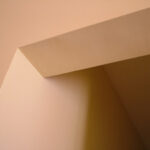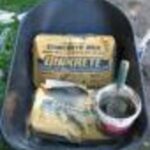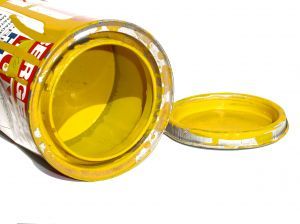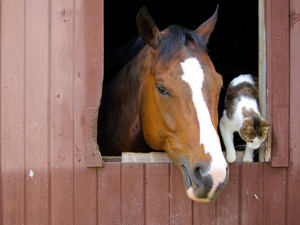Upholstered furniture can become ripped when reclined or placed against rough walls, and they can become damaged in a number of unexpected ways. My mother found this out firsthand. She had a new reclining piece of furniture positioned near a painted concrete wall in a basement, and unfortunately the corner of the fabric was ripped when it was repeatedly reclined against the coarse surface. I came up with an easy way to repair the rip and save the furniture from further damage, and I have since thought of another easy way to repair a larger rip on the back of upholstered furnishings.
How to Repair a Small Rip on a Corner
When a piece of my mom’s upholstered furniture developed an ugly rip on a back corner, she was very disheartened, especially since it was brand new. At first I did not know how I could repair the damage, but after careful thought I came up with a plan. I purchased decorative upholstery tacks that I used to hide and repair the rip. I gathered the material to secure the tear, and I pounded the upholstery tack into the wood frame. I followed the same procedure on the other corner to give the back of the furniture a uniform appearance. The tacks looked like they were always a part of the back of the upholstered furniture, and the rip became invisible.
The package of upholstery tacks was less than three dollars. Besides hiding the rip on the back of the upholstered furniture, the sturdy tacks also prevented the back corners from sustaining further damage. It was impossible to tell that the back of the upholstered furniture had ever been ripped, and I was thrilled with the results of the repair.
The piece of furniture I repaired is long gone, but I had to use the same method to repair a recliner that was damaged by a wall in my basement. Now I protect the corners of every new piece of upholstered furniture with decorative corner tacks. This proactive method of upholstered furniture repair is ideal when nearby walls are made of concrete, stone, or other hard material, but keep in mind that metal tacks can damage other surfaces.
Try This Easy Way to Repair and Cover a Large Rip
When the back of an upholstered piece of furniture inadvertently ends up with a rip, do not take it to a professional for repair unless you are willing to pay almost as much as the cost of a new piece of furniture. Unless the upholstered furniture is antique or holds sentimental value, it might not be worth the trouble and expense of professional reupholstering. Instead, consider making a cover with upholstery fabric to hide the unsightly rip.
Begin by securing the rip with clear fabric repair tape. This will prevent the material from sagging, and it will keep it from ripping or unraveling further. It is considerably cheaper than tape designed especially for upholstered furniture repair, and it is easy to locate. Clear fabric tape can be found in hardware stores, home improvement stores, camping supply stores, and online. Also known as awning repair tape, it is typically used to repair canvas awnings and other outdoor materials. In any case the tape will be hidden once the repair is complete.
Next, select fabric that matches or coordinates with the back of the damaged upholstered furniture along with self-adhesive hook and loop fasteners more commonly referred to as Velcro. Cut the fabric to a width that is approximately two inches wider than the width of the back of the furniture, and hem and iron the raw edges to prevent unraveling. Apply the hook and loop fasteners to the edges of the material and in corresponding areas on the back of the piece of furniture. Pull the fabric taut over the back of the furniture and the rip will be hidden.
If the material coordinates well with the existing fabric on the back of the upholstered furniture, chances are no one will notice the repair. They will not be able to see the rip, and the back of the upholstered furniture will not appear damaged. More than likely no one will even look at the back of the furniture, but if they do the rip and the repair will be completely covered.






